The Task Manager on a Windows PC could be renamed the Knight in shining armor and most users might appreciate it even. If you’ve ever used a Windows PC for a long enough time you know what I’m talking about. Since I remember, from Windows XP and even Windows 7 and 8, programs becoming unresponsive was a real problem. There would be no other way to kill it but use the Task Manager. It often gets so bad that most things, including the taskbar, become unresponsive.
It doesn’t happen as often but it does on some random rare occasions. In Ubuntu, these program windows get grayed out but you still can’t close them or anything. Unlike Windows, you don’t even have a taskbar to right-click on and select Task Manager. You can’t use Ctrl+Alt+Del because it brings the logoff screen instead.
If you search for the Task Manager in the Unity Dash or use any other tools you may have installed, you won’t find it either. That does not mean Ubuntu lacks a Task Manager though. Instead, the Task Manager in Ubuntu is known as System Monitor. It lacks features compared to the new Task Manager introduced in Windows 8, which is used on Windows 10. But the System Monitor on Ubuntu does do the job of managing tasks quite perfectly.
Must read: How to Install and Uninstall Software in Ubuntu
Use System Monitor (Task Manager) in Ubuntu
- Launch the System Monitor by searching for it or typing the following command in a terminal window.
gnome-system-monitor
- You’ll notice it is divided into three tabs: Processes, Resources, and File Systems.
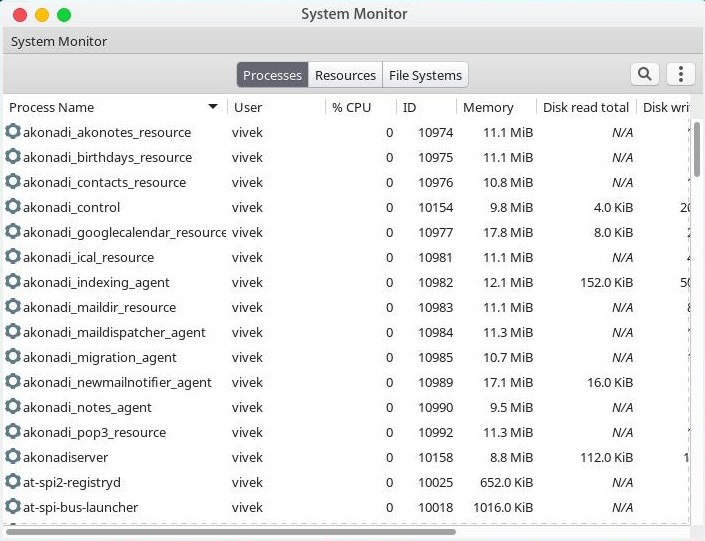
- The Processes tab shows a list of all the currently running processes along with their Process ID, CPU, and Memory usage. It also shows the priority of the process which is something the Windows Task Manager doesn’t do.
- To close an unresponsive program or a process, right-click it and you will get several options. You can choose to Stop, Continue, End, or Kill a process.
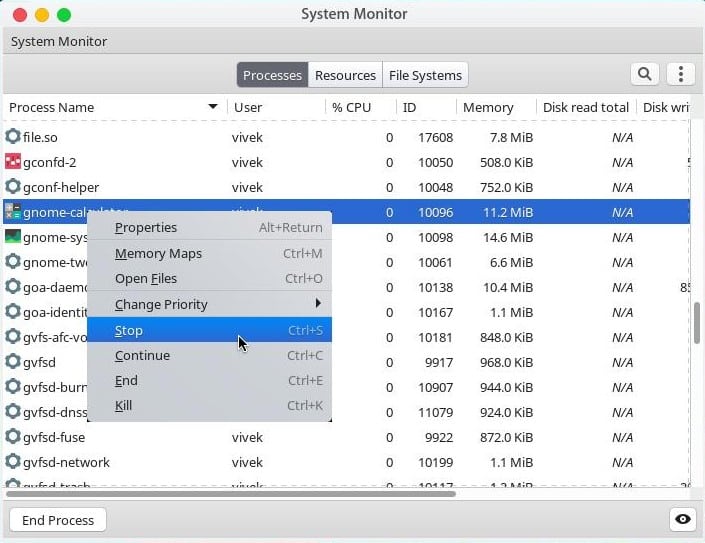
- Stop Process: Sends a pause signal, does not kill the process so you can continue later.
- Continue Process: This lets you continue a stopped process.
- End Process: Sends a termination signal, meaning the application is allowed to intercept this signal and initiate shutdown tasks such as saving a file and cleaning up temporary files before shutting down. It is the recommended way to close an unresponsive program.
- Kill Process: Not hard to guess, it sends a kill signal which immediately kills a process. It’s better to use this only when the End process doesn’t work.
- Select any of the available choices and the magic wand will be waived.
- If you’re feeling adventurous, click the other two tabs: Resources and File Systems to see what they hold.
- The Resources tab displays the resource analytics for the system such as CPU History, Memory and Swap History, and Network History.
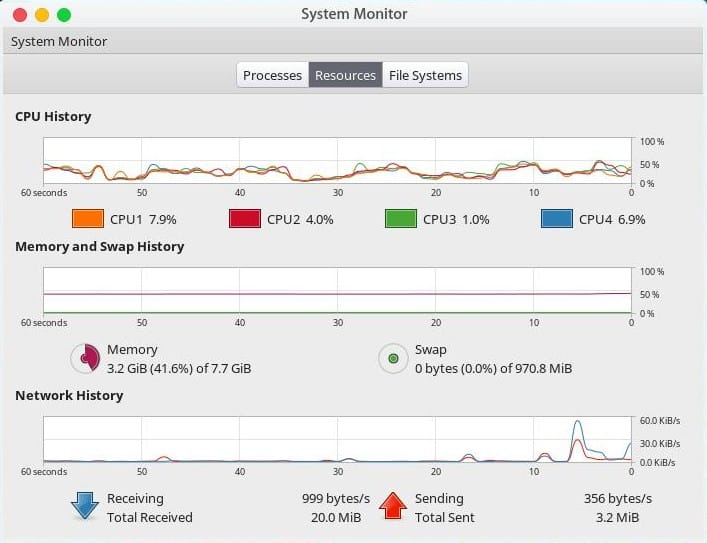
- The File Systems tab shows information about the different drives, internal or external. Information such as Type, Total Size, Available and Used Disk size.
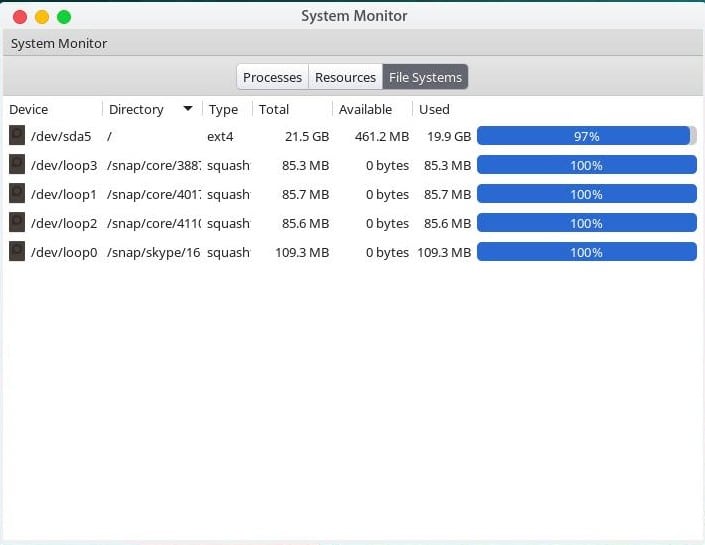
Assing a keyboard shortcut to System Monitor
- Open the Keyboard utility from the Unity dash or go to System Settings > Keyboard.
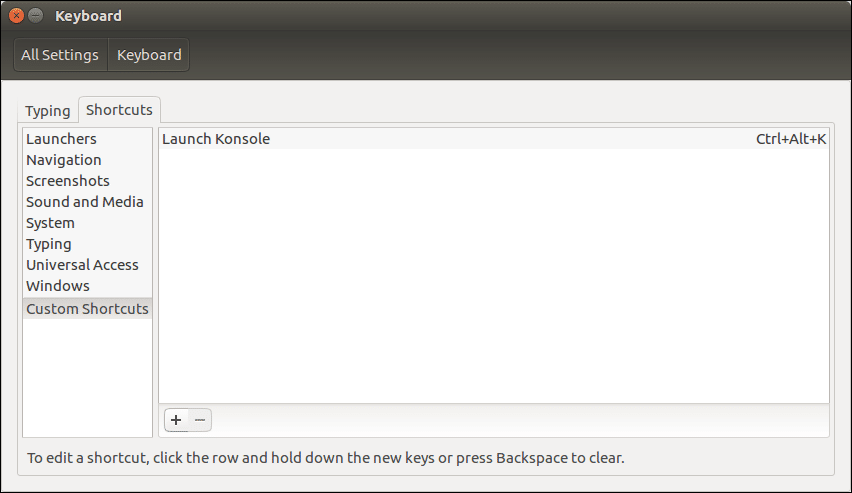
- In the Shortcuts tab, click the + button, and a small pop-up window opens. Here you can give it a name and in the command field enter gnome-system-monitor. Click Apply.
- Click where it says Disabled now and then press the key combination you want to use. If you prefer, you can press Ctrl+Alt+Delete as well. You will be warned that this shortcut is already assigned for Log Out, and click Reassign.
If you are using another desktop environment with Ubuntu, such as KDE Plasma, the process can be a little different for you.
Don’t miss: 5 Best Linux Icon Themes You Should Try
